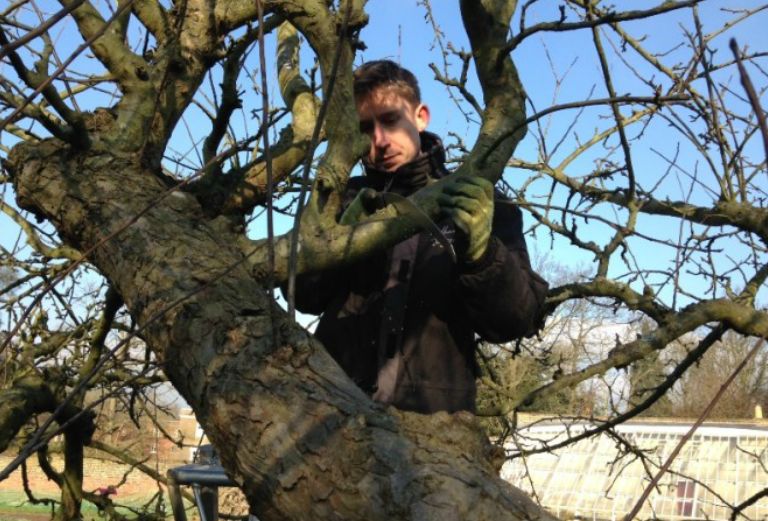
by Josh Bennett, garden apprentice
I’m now into the seventh week of my apprenticeship here in the Fulham Palace garden. Already I have learnt a great deal and been involved with many aspects around the gardens. Certain highlights so far include pruning the 150 year old wisteria (Wisteria sinensis), planting a range of North American bulbs and trimming the yew (Taxus baccata) hedge into its beautiful flowing form. I must say a big thank you to the RHS Susan Pearson Bursary, which has helped towards the funding of my position.
One of the latest tasks which the apprentices have been involved in was the second year prune of the orchard, kindly funded by Gordon and Paula Edington (Gordon is Property Trustee and Deputy Chairman of Fulham Palace). The orchard has a variety of themes running through it. Of the transatlantic varieties – apple trees bred in England and Europe which were originally sent over to North America in the 1600’s – we have twenty three trees. From these, we have six varieties which were bred in America and later sent back to England. A further six varieties were trees that had been grown by the Bishops here and the final twelve trees were recommended varieties from George London (Bishop Compton’s gardener) and Henry Wise (London’s eventual business partner).
The majority of the trees have grown well in the previous year, particularly ‘Sykehouse Russet’, ‘Royal Wilding’ and ‘Newton Pippin’, and we have begun to train them into their eventual shape. The aim is to have trees which resemble a goblet shape, with an open centre to allow light and air to circulate around the tree.
There were a few key steps to take during this process. Firstly, we were to identify roughly 3-5 strong branches, ideally lateral, which can develop into the scaffold for the tree. If these branches were more vertical then they could be trained into a horizontal branch with the help of some string and pegs. In a number of cases there was a leading vertical branch which dominates the plant’s growth. This was to be cut back in order to help the scaffold branches to develop. The selected horizontal branches will eventually be the fruit bearing parts of the tree. Once this had been completed, we re-staked the tree, using canes or wooden stakes, and applied ties and spacers to keep it in place.
The two mature apple trees in the vegetable garden have also been given a prune. Again, we were looking to increase light and air in the centre of the tree, so some pretty tough branches had to be removed. We also cut out any dead, diseased, dying or crossing branches. Any new vertical growth was then cut back by around a third to an outward facing bud, to encourage it to branch out and bear fruit. We look forward to seeing the results of our work later this year.